Image
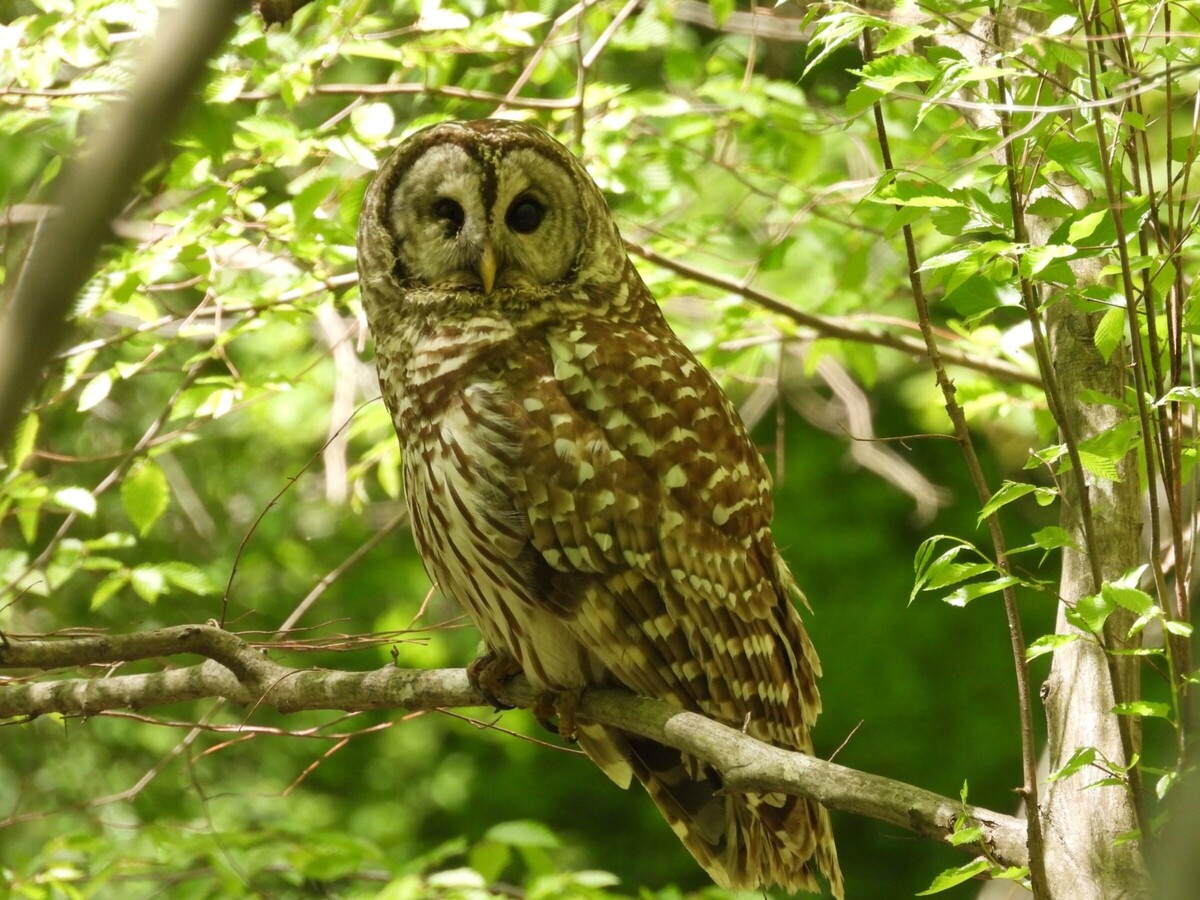
by Mike Strzelecki*
Barred owls are not the most common owl species found in Pennsylvania; that honor goes to the great-horned owls. But barred owls are the species you are most likely to see. This is because barred owls are larger than most owls, often perch more prominently than other owls, and tend to be very curious. If you happen to pass a barred owl while hiking, instead of fleeing, it will often keep a sharp eye on you and bounce from branch to branch as you pass.
Barred owls are named for the striped plumage across their chest. They are brown and white, with some tending towards more of a gray coat. They are large - adults are often 24 inches long and sport an imposing five-foot wingspan. They lack the ear tufts of the great-horned owl and have piercing brown eyes.
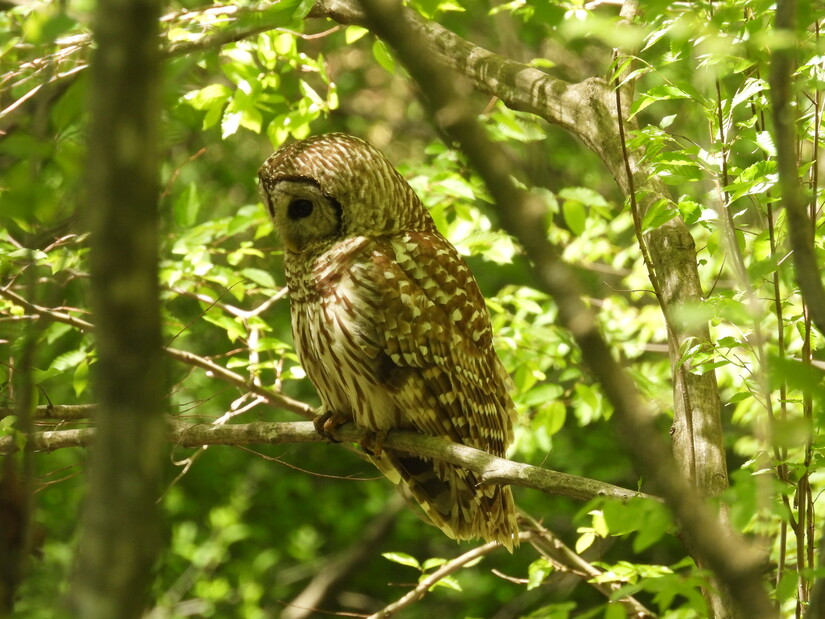
The most surefire way to spot a barred owl is to keep your ears open. You can often hear their haunting calls, especially in spring. Not only in forests, but also across suburban developments. Listen for a deep, guttural “Who? Who? Who cooks for you?” It will send chills up your spine and you’ll immediately understand why they are also known as hoot owls. From afar, their call is often confused with a barking dog. If you hear a return call that sounds like maniacal laughing, you wandered into a mating conversion between two adult barred owls.
Also, while out walking at dusk, keep an eye out for large birds perched on a low-hanging limb and silhouetted against the moonlight. This could be a barred owl. This picture is of a barred owl perched at dusk at the Alligator River National Wildlife Refuge, in North Carolina.

Barred owls are generally residential species that do not migrate seasonally. However, they do aggressively spread their habitat footprint. They used to be mostly situated in the northeastern states but have since expanded southwards and also into the Pacific northwest. This has created a problem. They are aggressive and have been taking habitat away from the northern spotted owl, an endangered species. The U.S. Fish and Wildlife Service is mandated to preserve endangered species, and as such, has been asked to address this clash of owl species. One option being considered is to cull over 400,000 barred owls that have situated in the Pacific northwest to cede habitat back to the northern spotted owl. I am hoping for a more agreeable solution for all species.
Barred owls are opportunistic feeders. They are deadly silent while hunting. The large, concave faces of owls act as radar, collecting sounds from the forest, allowing them to hear possible prey moving around. They feed on virtually any small mammal like mice and voles. They will occasionally wade into shallow water to feast on crayfish or crabs. If a barred owl ingests enough crayfish, the feathers under its wings may take on a pinkish hue. This is not unlike the flamingo that gets its sharp pink color from eating large volumes of shrimp.
Barred owls begin nesting in March and their eggs typically hatch in early April. Last year, I stumbled upon three newly hatched barred owls in a less-trodden section of my local state park. I returned frequently over the course of a few weeks to watch them mature. It was a treat observing them learning to fly and figuring out how to catch mice. Here are a few pictures I took from that experience.
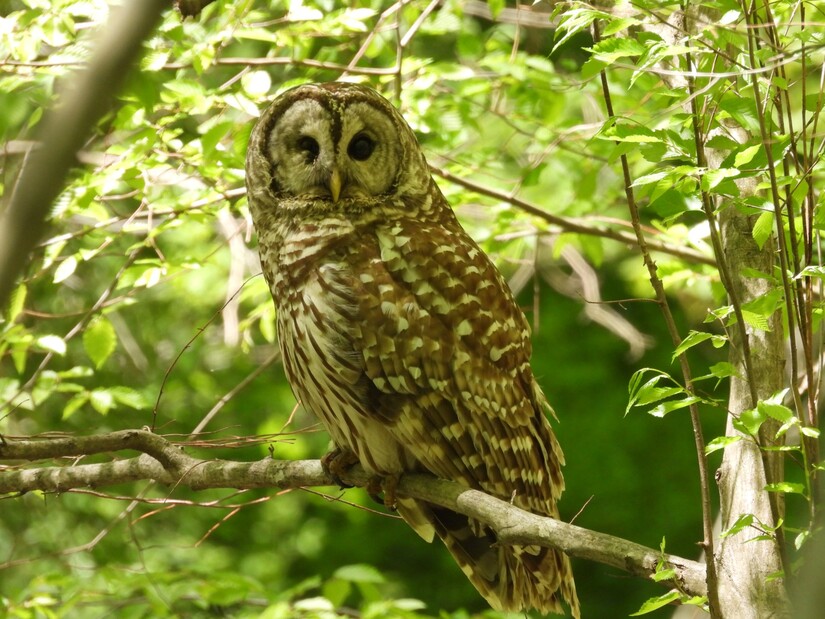
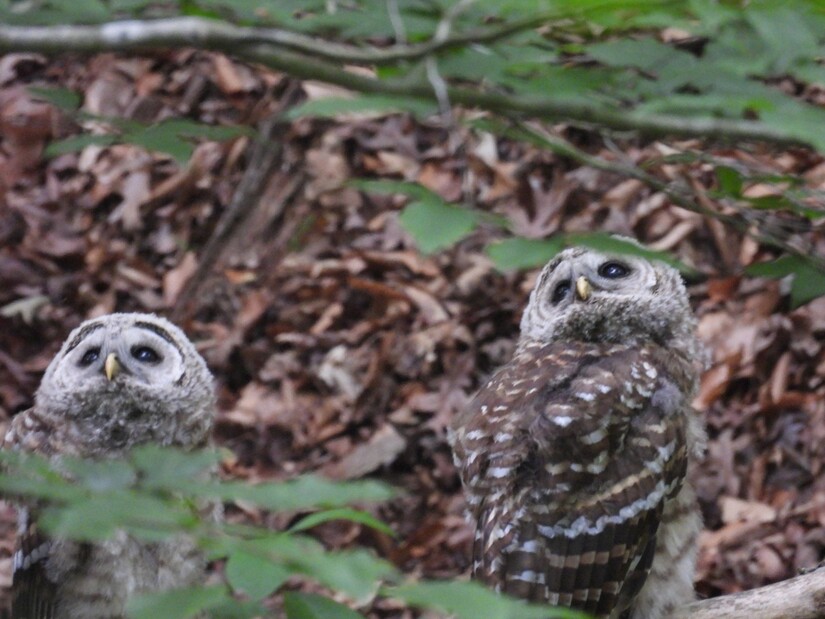
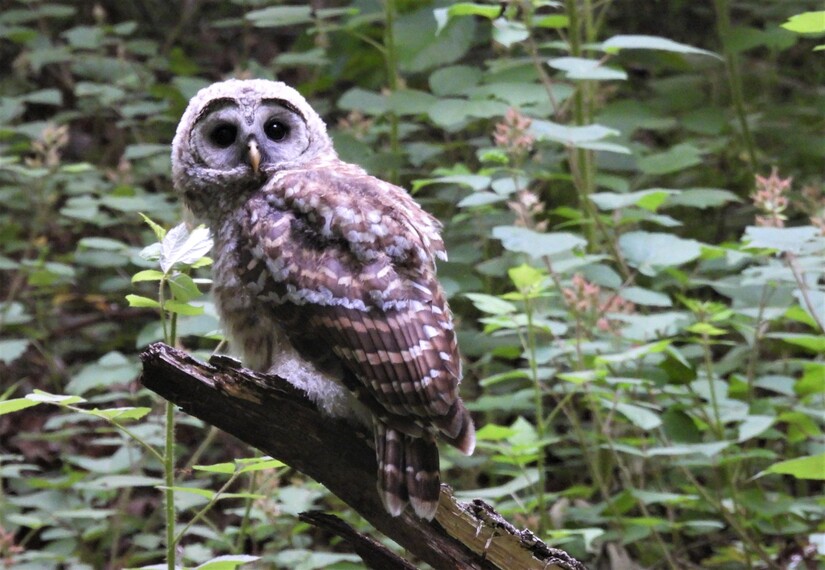
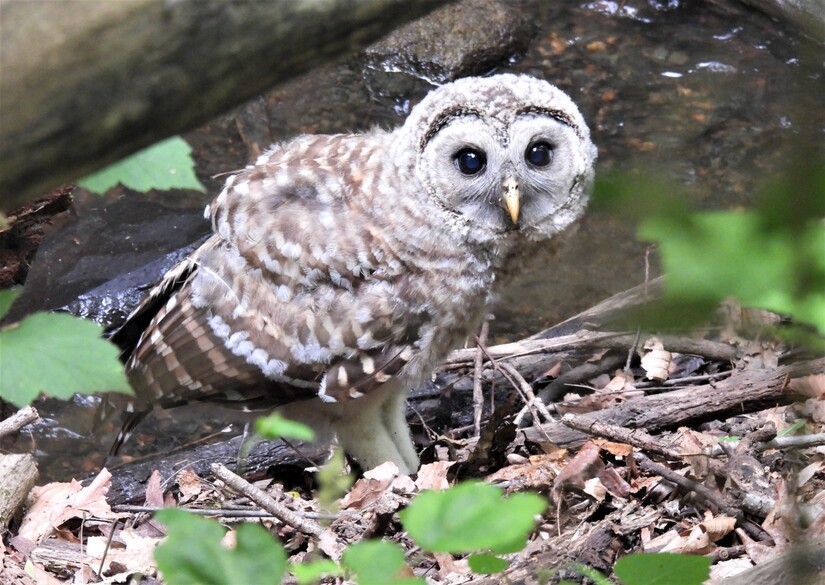

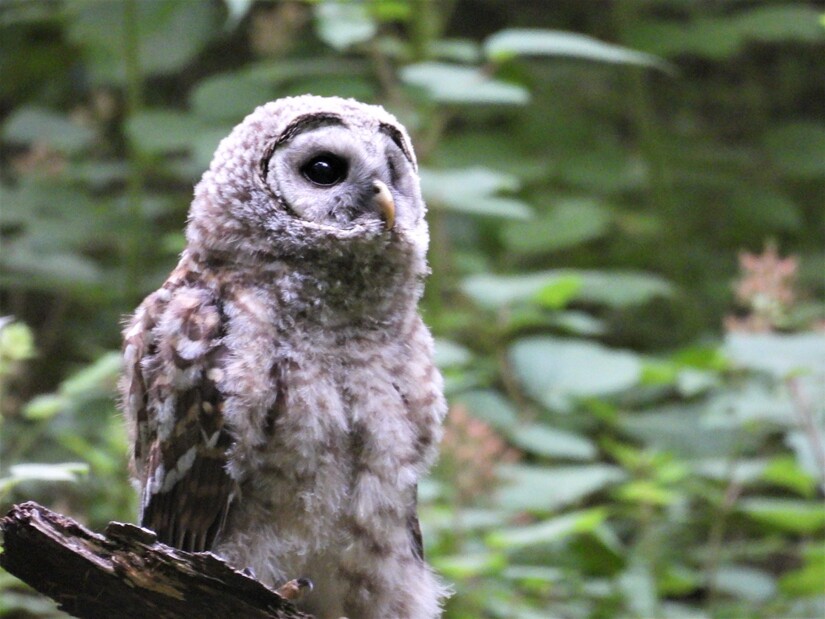

One last fun fact regarding the barred owl. Harriet Tubman was the iconic activist and abolitionist who led scores of people to freedom by guiding them along the underground railroad. She was also a fervent naturalist. Historians believe that Harriet Tubman used the call of the barred owl to signal to escaped slaves that the coast was clear and that they could continue on along the underground railroad. It is the barred owl’s special place in history.
* Mike Strzelecki is a freelance travel and outdoor writer, and 1981 graduate of Boyertown Area Senior High School. He writes from his house in Baltimore, Maryland. In his spare time, he joins his wife on adventures around the country observing and photographing birds.